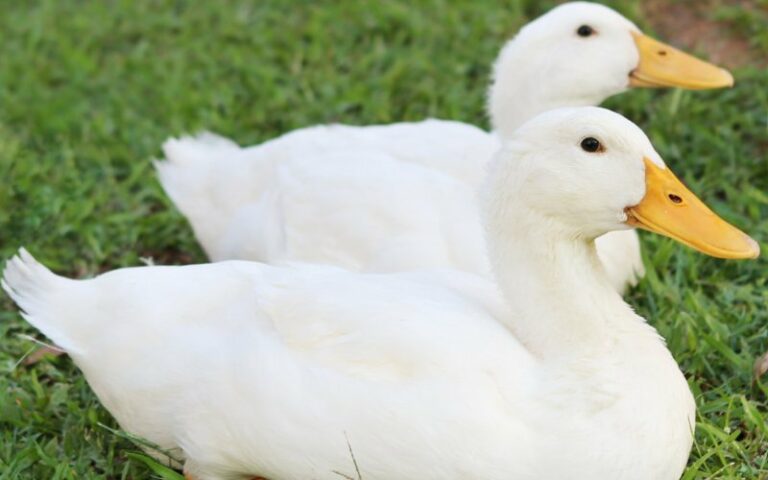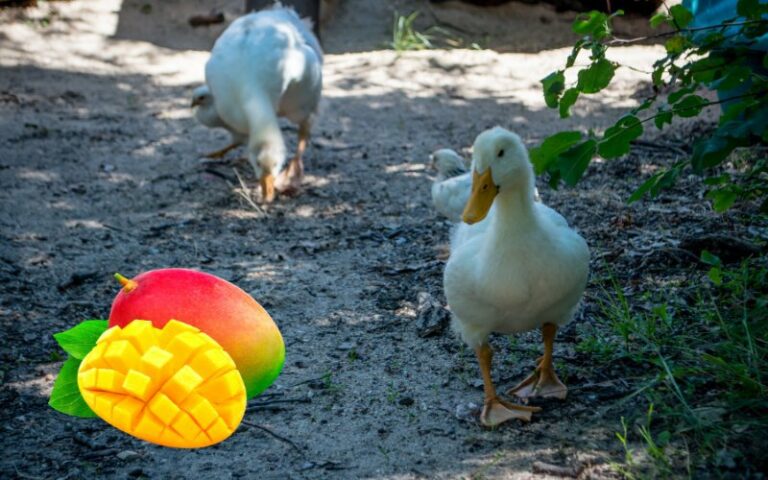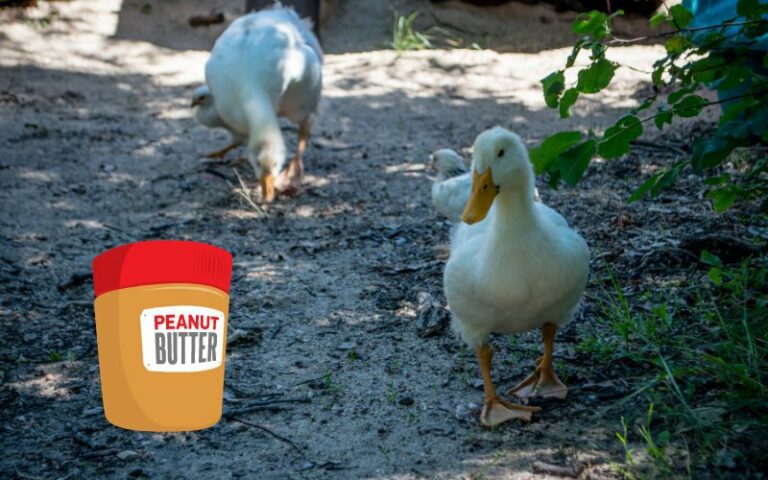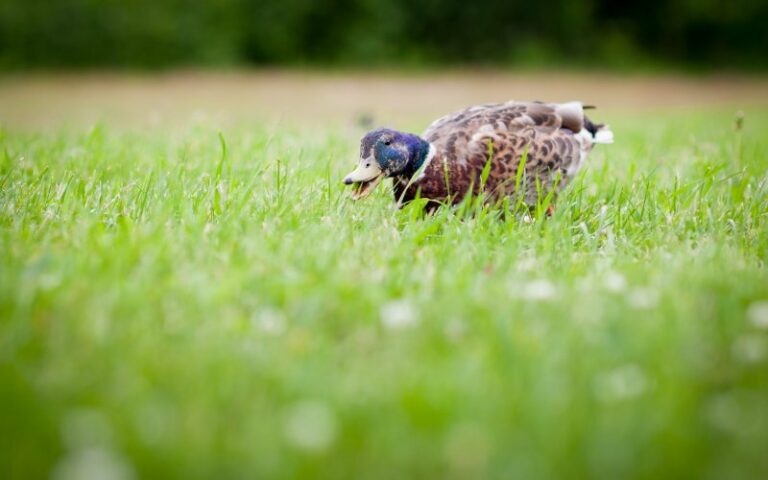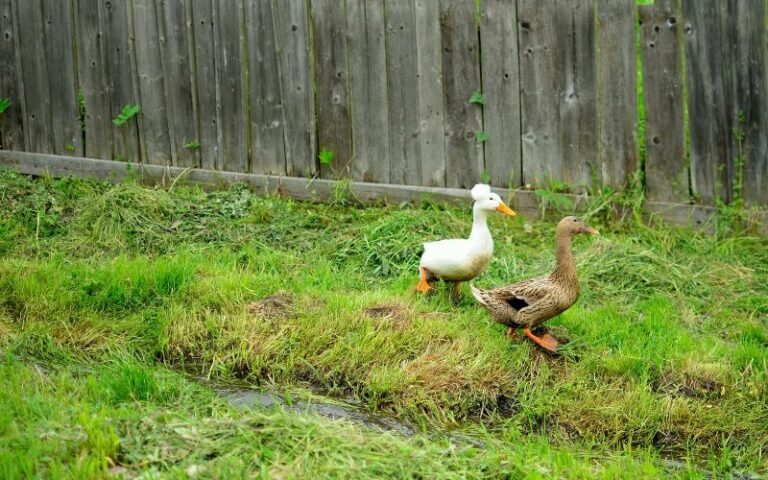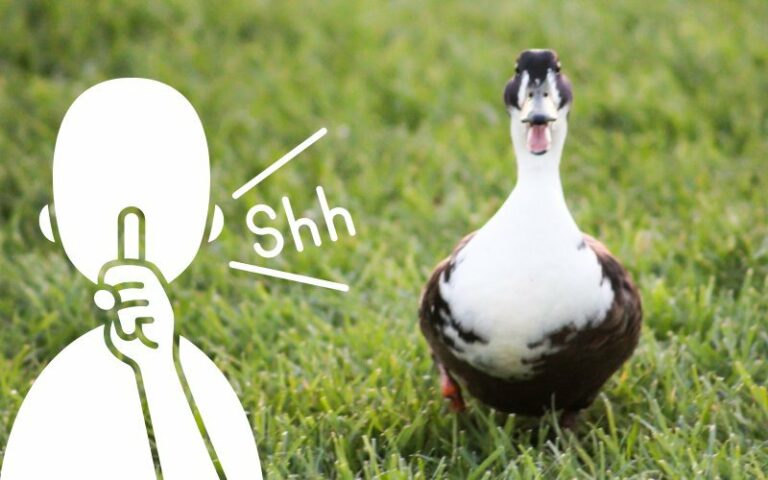Quietest Duck Breeds (9 Options If You Want to Sleep)
I’ve always been genuinely astounded by how persistent ducks can be with their noise. They’re a little like crickets – ducks seem to be able to quack on forever, filling every moment of silence with noise. It’s almost as if they’re in love with the sound of their own voices.
However, I’ve also been fortunate enough to have enough land to keep the duck pen out of earshot. But if you’re thinking about keeping ducks in a smaller backyard area, and you’d like to sleep at night and remain on friendly terms with your neighbors, it’s a good idea to consider noise when you’re choosing a duck breed.
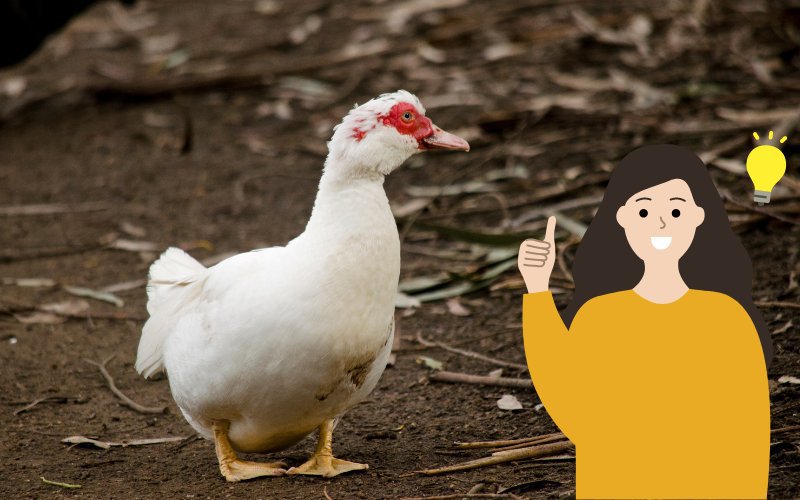
What Are the Quietest Duck Breeds? (The Short Answer)
You might not know that duck breed can make a big difference in how much noise your ducks will make. Muscovy ducks are generally considered the quietest duck breed, but some of the runners-up for quietness include Cayugas, Swedish Blues, and Magpies, among others.
First Things First: Do Ducks Really Make a Lot of Noise?
In short, yes. Of all the animals I’ve ever owned, I think I can safely say that ducks are the loudest – in the most obnoxious way possible. Different breeds of ducks can make a variety of noises; they can quack, squeak, bark, grunt, whistle, and hiss.
That doesn’t mean you shouldn’t keep ducks as pets; ducks can also be some of the friendliest, happiest pets you’ll ever meet. A duck waddling along in a puddle with its buddies just looks so satisfied with life.
The noise hasn’t been a huge personal problem for me, but if you don’t have enough land to keep your ducks out of earshot, I would definitely recommend taking noise into account – because ducks just might be among the noisiest animals you can own.
9 Quiet(er) Duck Breeds
Some duck breeds are known for being quieter than others, so consider these options when you’re deciding which breed to purchase.
Muscovy Ducks
Muscovies are widely considered to be the absolute quietest ducks. A Muscovy duck typically won’t make noise unless it’s happy, startled, or attacked – and the noise it makes isn’t a loud quack; it’s more of a soft trill or a hushed call, depending on whether it’s a male or female.
Take into account that Muscovies have a fairly low egg production – they tend to lay about 60-120 eggs per year, so they’re not amazing if you want to enjoy duck eggs for breakfast. However, these ducks are pretty hardy and they’ll live up to 20 years. Also, unlike many other breeds of ducks, they don’t swim a lot due to undeveloped oil glands. This makes them a good option if you intend your ducks to be pets.
Cayuga Ducks
A Cayuga duck also won’t make noise unless it feels threatened, hungry, or isolated, and the noise it makes is typically quiet compared to other duck breeds. These ducks are quite common in the United States, so they’re fairly easy to find and purchase, and they are relatively good egg layers.
Cayugas tend to be quite social as well – they’re friendly to other ducks and humans, making them a good choice for backyard ducks. Finally, the appearance of these birds is stunning – they’re medium-sized with iridescent black feathers that turn to a shimmery green under light.
Swedish Blue Ducks
Swedish Blues originated in Sweden and tend to be fairly quiet ducks, especially when they’re around water. They may quack on occasion, but it’s usually less frequent and loud than many other breeds.
Swedish Blue ducks are quite heavy as ducks go and they’re covered with feathers of different shades of grayish-blue. With decent egg production, they’re a good backyard option – but few domesticated Swedish Blue ducks are left in the United States, which means that they’re harder to purchase.
Khaki Campbell Ducks
If you’re looking for a small duck that lays a lot of eggs and provides tasty meat, Khaki Campbell ducks make a great choice. They got their name because their developer, Adele Campbell, thought that their plumage looked like British military uniforms. These ducks are social, don’t fly, and are pretty hardy when it comes to surviving different environments. Because they have heavy, dense bodies, they’re not great at flying – but like many other ducks, they are excellent swimmers.
They also won’t keep you – or your neighbors – awake at night; they don’t make noise unless they’re excited, hungry, or threatened, and the noise they do make is usually only hushed chatters or grunts.
Runner Ducks
Runner ducks grow quickly and produce a lot of eggs – they lay more than 220 eggs a year on average. They’re also fairly quiet; females will sometimes quack quietly and drakes typically don’t make any noise at all. This duck breed’s unique advantage is that they feed on mosquito larvae, drastically reducing your mosquito population. As their name suggests, they’re incredibly speedy and don’t waddle like other duck breeds.
Appleyard Ducks
Appleyard ducks make little noise as long as they have the food and water they need. They’re easy to take care of, they’re social and friendly with both people and animals, and they’re good egg layers. They also have interesting colors and patterns in their feathers that are very attractive to the eye.
Crested Ducks
Crested ducks only make noise when females are looking for mates. Mostly white, these birds also have unique black highlights and a crest on their heads that both give them their name and visually set them apart from other breeds. Crested ducks lay fewer eggs than many other breeds, but they tend to be quite large as duck eggs go. This breed has been around for thousands of years and comes in a variety of colors.
Magpie Ducks
Magpies were bred relatively recently, after the first World War, and they’re quiet, calm, and friendly birds. They lay over 200 eggs per year, and their eggs can be of a variety of colors, including white, cream, blue, and green. Magpies have black-and-white feathers, are quite hardy, and will live for more than nine years in your backyard, making them a good choice if you’re looking for a pet.
Saxony Ducks
Saxony ducks were developed in the 1930s in Germany, but the breed was almost lost during World War II. A breeder named Alfred Franz rescued the Saxony breed and a few decades later Saxonies were transported to America. However, they’re still considered endangered as a species.
One of the heavier birds on this list, the Saxony duck grows slowly. It’s an attractive bird with an egg production average of about 200 eggs per year. Saxonies are very friendly, gentle, and hardy, but they’re also very energetic and lively. They’ll live happily in a variety of different environments.
Female Saxonies make quiet quack sounds and drakes make soft, raspy sounds that are far quieter than many other duck breeds.
3 Things You Can Do to Encourage Your Ducks to Be Quieter
If you already own ducks that won’t keep the noise levels down, there are a few things you can do to help keep your ducks quieter.
- Drakes typically cause more noise than other ducks, so try separating drakes from the rest of the flock – or avoid purchasing any altogether.
- Make sure that ducks have enough food and water, as ducks will sometimes become noisy due to discomfort. On a similar note, ensure that your ducks are healthy and happy; check that they’re not suffering from parasites and that they have enough calcium and grit.
- Loneliness may also cause noise. Get a few more ducks to help the ducks feel secure and reduce boredom. You can also give them variety within their enclosure; add new nesting spots, include a swimming area, or change the terrain with branches, rocks, and stumps.

